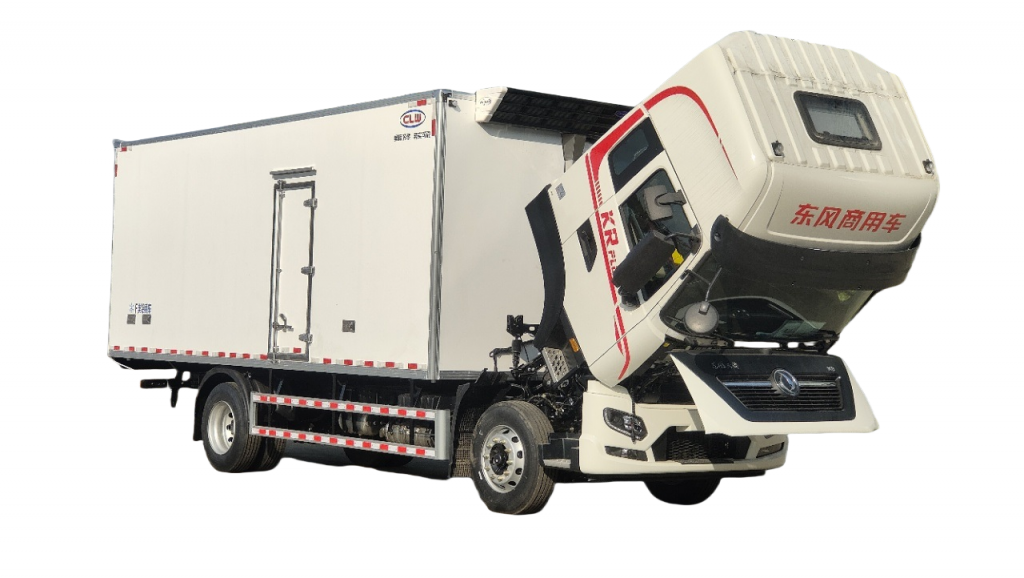Enhancing Safety and Efficiency in Hazardous Material Handling with Truck Mounted Cranes

Introduction
In the realm of hazardous material handling, safety and efficiency are paramount. The transportation and handling of hazardous materials require specialized equipment and trained personnel to ensure the protection of both workers and the environment. Truck mounted cranes have emerged as a valuable tool in this field, offering a versatile and reliable solution for the lifting and transporting of hazardous materials. This article explores the role of truck mounted cranes in hazardous material handling, highlighting their benefits, applications, and best practices for safe and efficient operations.
Understanding Hazardous Material Handling
Hazardous materials, also known as hazmat, pose a significant risk to human health, the environment, and property. These materials include a wide range of substances, such as chemicals, gases, flammable liquids, radioactive materials, and more. Handling hazardous materials requires adherence to strict regulations and protocols to minimize risks and ensure compliance with safety standards.
Transporting and lifting hazardous materials present unique challenges that require specialized equipment to mitigate risks effectively. Traditional methods of material handling, such as manual labor or basic lifting equipment, may not be suitable for hazardous materials due to their volatile nature and potential for accidents. Truck mounted cranes offer a safe and efficient alternative for lifting and transporting hazardous materials in various industries, including construction, manufacturing, and waste management.
Benefits of Truck Mounted Cranes in Hazardous Material Handling
Truck mounted cranes provide several advantages when it comes to handling hazardous materials:
1. Versatility: Truck mounted cranes are highly versatile and can be easily maneuvered to access hard-to-reach areas, such as construction sites or industrial facilities. Their mobility allows for efficient transportation of hazardous materials within a work site or between locations.
2. Lifting Capacity: Truck mounted cranes come in a range of capacities to suit different lifting requirements. Whether lifting heavy containers, drums, or equipment, these cranes can safely handle the weight of hazardous materials without compromising safety.
3. Safety Features: Modern truck mounted cranes are equipped with advanced safety features, such as load monitoring systems, anti-collision devices, and emergency stop mechanisms. These features enhance operator safety and reduce the risk of accidents during material handling operations.
4. Time and Cost Efficiency: Truck mounted cranes offer a cost-effective solution for lifting and transporting hazardous materials, reducing the need for manual labor and multiple pieces of equipment. Their efficiency helps streamline operations and minimize downtime, ultimately saving time and money for businesses.
Applications of Truck Mounted Cranes in Hazardous Material Handling
Truck mounted cranes find numerous applications in hazardous material handling across various industries. Some common applications include:
1. Waste Management: Truck mounted cranes are used in waste management facilities to handle hazardous waste containers, drums, and other materials. These cranes assist in loading and unloading waste materials from trucks, containers, or storage areas, ensuring safe and efficient handling of hazardous waste.
2. Construction: In the construction industry, truck mounted cranes are utilized to lift heavy building materials, equipment, and machinery at construction sites. When handling hazardous materials, such as chemicals or flammable liquids, these cranes provide a reliable and secure lifting solution to prevent spills or accidents.

3. Manufacturing: Manufacturing facilities often deal with hazardous materials as part of their production processes. Truck mounted cranes are employed to transport raw materials, finished products, or equipment within the facility, ensuring smooth operations and compliance with safety regulations.
4. Emergency Response: During hazardous material spills or accidents, truck mounted cranes play a crucial role in containment and cleanup efforts. These cranes can be quickly deployed to lift and move hazardous materials to secure locations, minimizing the impact on the environment and public health.
Best Practices for Safe and Efficient Operation
To ensure the safe and efficient operation of truck mounted cranes in hazardous material handling, it is essential to follow best practices and guidelines:
1. Training and Certification: Operators should receive proper training and certification to operate truck mounted cranes safely. Training programs should cover crane operation, maintenance, load handling, and safety protocols specific to hazardous materials.
2. Pre-Operation Inspection: Before each use, conduct a thorough inspection of the crane to check for any defects, damage, or malfunctions. Ensure that all safety features are functional, and the crane is in good working condition.
3. https://www.worktruckmaker.com/street-sweeper-truck-reviews-best-choices-for-clean-streets/ and Stability: Be aware of the crane's load capacity and ensure that the load is within the specified limits. Avoid overloading the crane, as it can compromise stability and lead to accidents.
4. Hazard Identification: Identify and assess potential hazards associated with the handling of hazardous materials, such as chemical spills, leaks, or exposure risks. Take necessary precautions to mitigate these risks and protect personnel and the environment.
5. Emergency Response Plan: Develop an emergency response plan that outlines procedures for handling accidents, spills, or other emergencies involving hazardous materials. Ensure that all personnel are trained on emergency protocols and have access to necessary safety equipment.
6. Compliance with Regulations: Adhere to regulatory requirements and safety standards governing the handling of hazardous materials. Stay informed about any updates or changes to regulations to ensure compliance and prevent violations.
Conclusion
Truck mounted cranes play a vital role in enhancing safety and efficiency in hazardous material handling operations. Their versatility, lifting capacity, safety features, and cost-effective nature make them a valuable asset for industries dealing with hazardous materials. By following best practices for safe and efficient operation, businesses can leverage the benefits of truck mounted cranes to streamline material handling processes and protect workers and the environment from potential risks. As technology continues to advance, truck mounted cranes are expected to evolve further, offering enhanced capabilities and features to meet the evolving needs of hazardous material handling.
